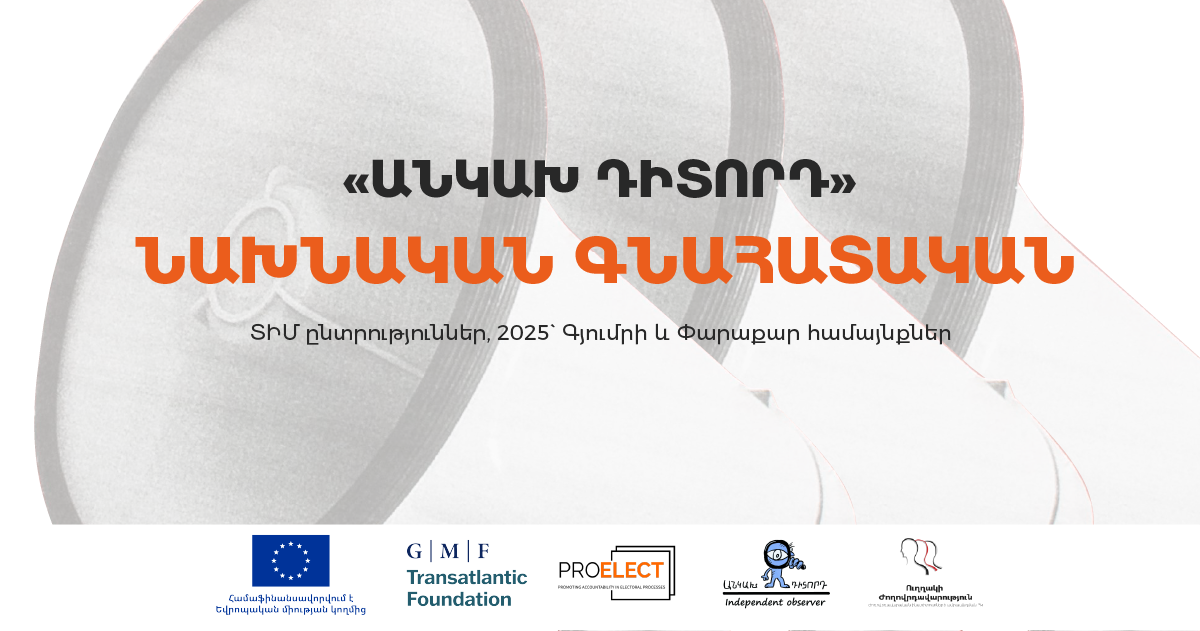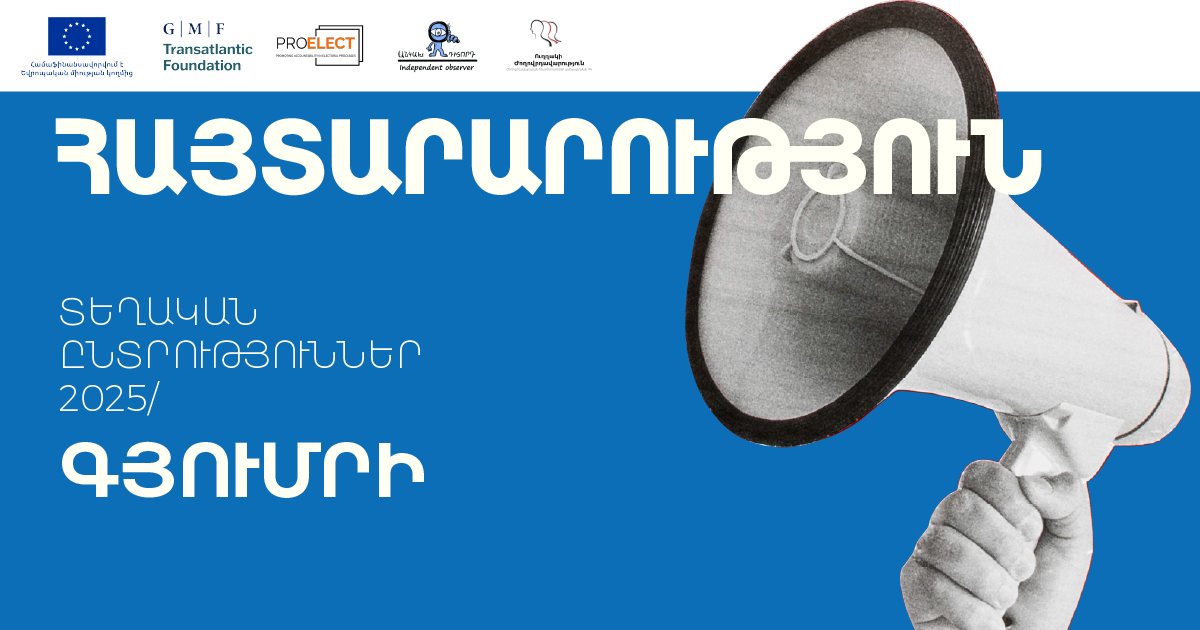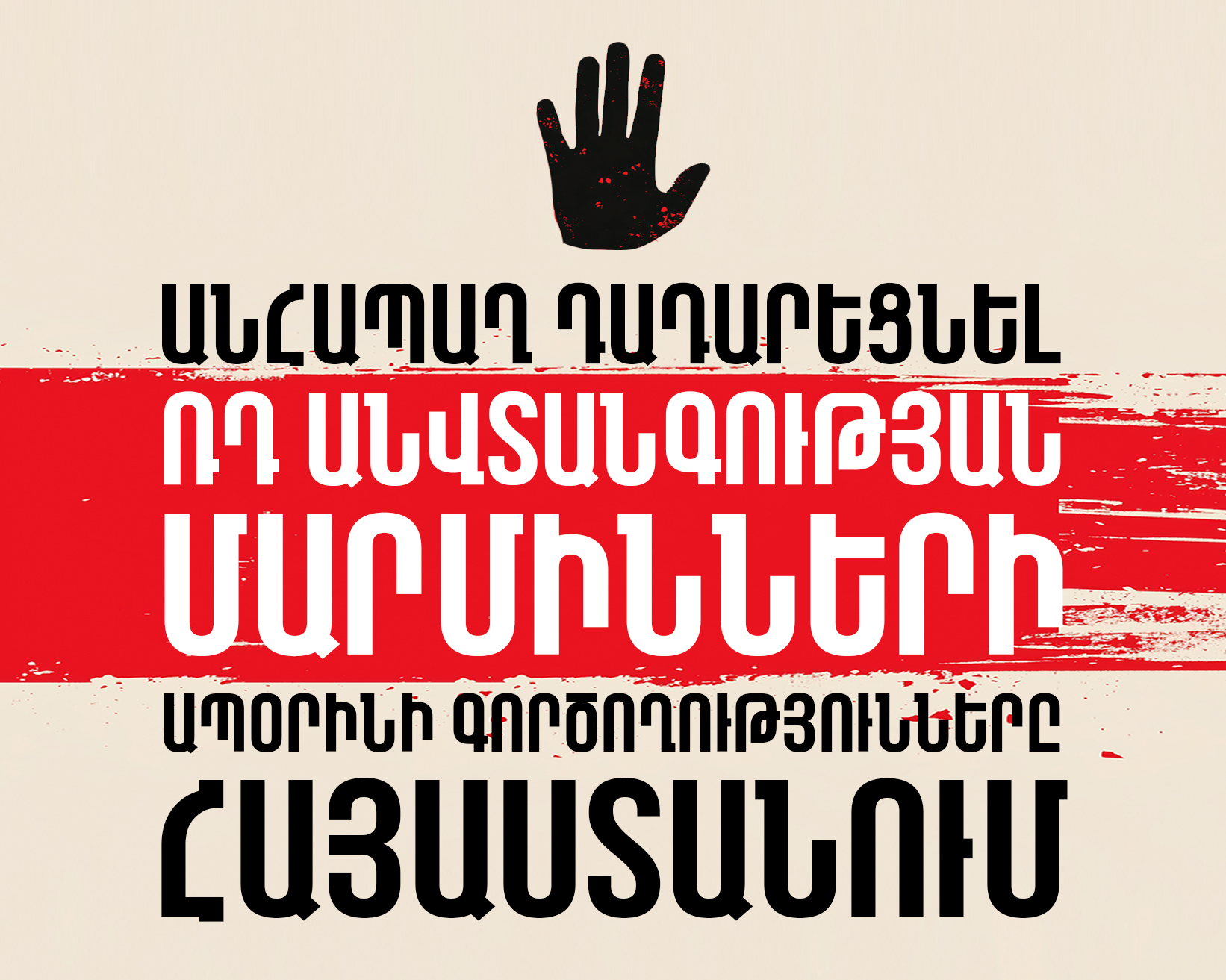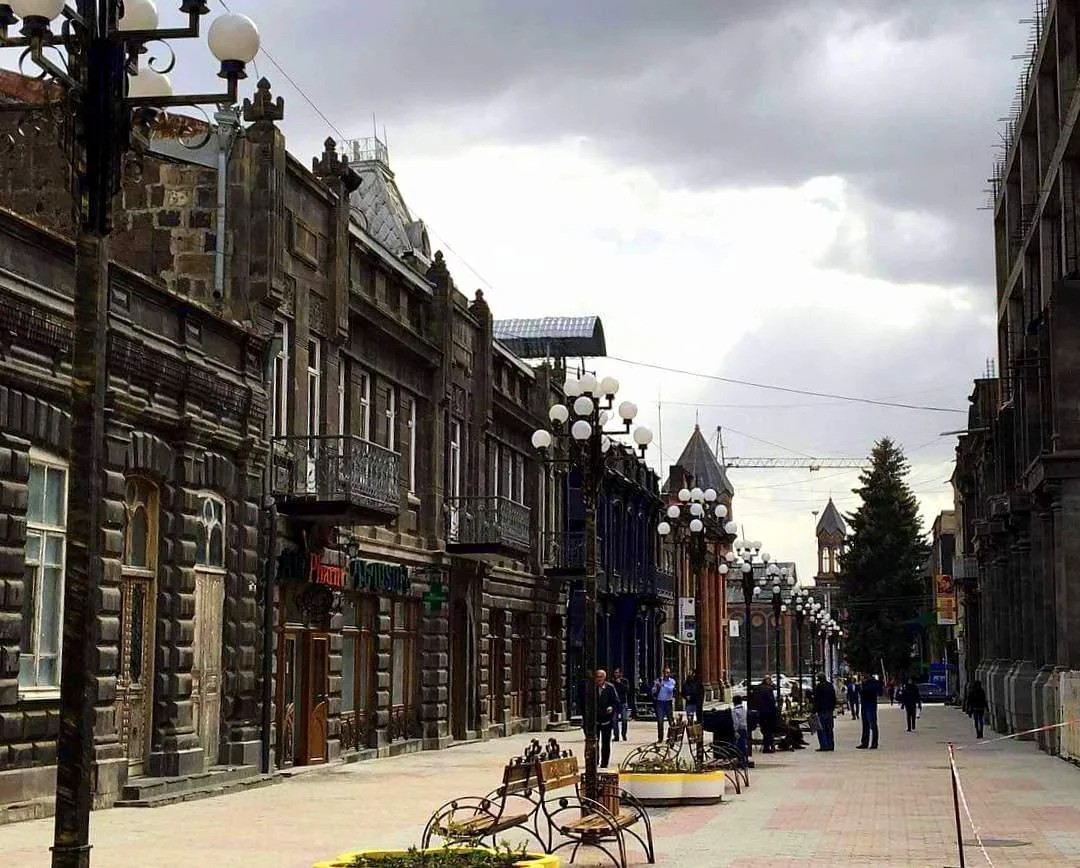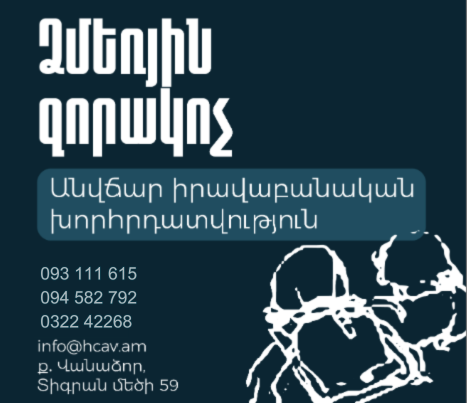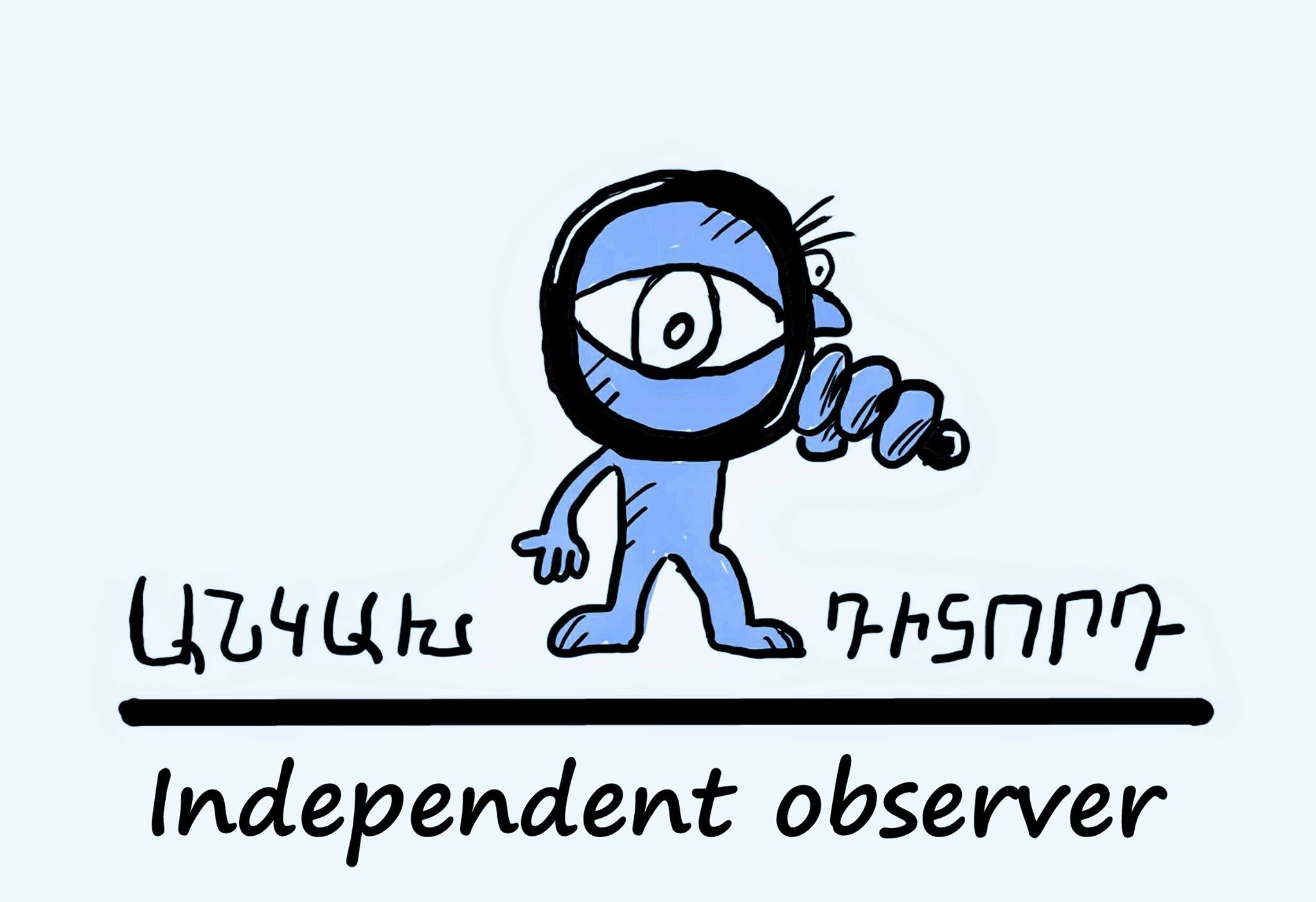




Call for Action: Decisive Measures Needed for Preventing Ethnic Cleansing or Worse in Nagorno-Karabakh

TO: Alice Ndreitu, Special Adviser on the Prevention of Genocide to United Nations Secretary General
FROM: “For Equal Rights” NGO, Helsinki Citizens’ Assembly – Vanadzor NGO, Law Development and Protection Foundation, Open Society Foundations – Armenia, Protection of Rights without Borders NGO, Transparency International Anti-Corruption Center
In September 2020, the South Caucasus has plunged into a major security crisis due to the large-scale military attack launched by Azerbaijan in Nagorno-Karabakh. The conflict, which is now known as the 44-Day War, has resulted in many deaths, the depopulation of multiple towns and villages, and an alarming humanitarian crisis on the ground. Two years have passed since the war, but major security issues have not been resolved yet, the fundamental rights of many people remain violated, and there is a significant and growing threat of new clashes and atrocities.
It is especially alarming that there is a probable scenario of ethnic cleansing of Nagorno-Karabakh of its indigenous Armenian population. The extremely hateful and belligerent rhetoric of the Azerbaijani government, the revisionist and racialized narratives that deny Armenians of historic agency, the destruction of Armenian monuments and appropriation of cultural heritage, the exceptional cruelty by Azerbaijani armed forces, the continuous threats to use violence and acts of intimidation are characteristic of genocidal atrocities. The scenario of ethnic cleansing could become a reality if the crimes committed by the Azerbaijani side remain unaddressed and no effective pressure is put on official Baku to abstain from the use of violence.
Systemic Hatred, Mass Atrocities, and Violations of IHL
War crimes have been part and parcel of Azerbaijan’s behavior. Mass atrocities, intimidation, and constant threats against Armenians in Nagorno-Karabakh and Armenia proper have become the norm and peaked during the last two years. Since these actions have not been condemned adequately, they have become reoccurring events in an environment of impunity. In such a situation, further violations of basic rights are expected.
The 44-Day War was fueled by anti-Armenian hatred that has been in the making for decades. As the President of Azerbaijan has openly stated, hatred towards Armenians has been a key factor in the upbringing of the new generation. The epidemic nature of this racism has been widely documented. In 2016, the European Commission against Racism and Intolerance (ECRI) published the report of its fifth monitoring cycle on Azerbaijan, where it is stated: “The authorities should ensure that public officials at all levels refrain from hate speech towards Armenians and create adequate conditions for the development of a diverse and independent civil society.” In December 2021, the International Court of Justice (ICJ) passed an order of provisional measures, stating that Republic of Azerbaijan must “Take all necessary measures to prevent the incitement and promotion of racial hatred and discrimination, including by its officials and public institutions, targeted at persons of Armenian national or ethnic origin.” In August 2022, the UN Committee on the Elimination of Racial Discrimination (CERD) published its findings on Azerbaijan, where it is stated that the Committee is “deeply concerned about allegations of grave human rights violations committed by the Azerbaijani military forces against prisoners of war and other protected persons of Armenian ethnic or national origin.” Perhaps one of the most vivid example of Armenophobia was the opening of the infamous trophy park in Azerbaijan after the 44-Day War, where grotesque vax models of Armenian soldiers were presented.
Another shocking development that evidently demonstrated the embedded and systemic nature of this racism is the case of Ramil Safarov. The latter is an Azerbaijani army officer who murdered Gurgen Margaryan, an Armenian army lieutenant, in his sleep in Budapest, where they were attending a NATO training session in 2004. When the perpetrator was transferred to Azerbaijan by the Hungarian government, he received a hero’s welcome. As confirmed by the decision of the European Court of Human Rights (ECtHR) “R.S.’s [Ramil Safarov’s] virtual impunity, coupled with the glorification of his extremely cruel hate crime had a causal link to the Armenian ethnicity of his victims.” The Court also reiterated that “the present case does not merely concern R.S.’s pardon, but more generally the hero’s welcome accorded to him, the various benefits granted to him, and the unquestionable approval of his actions expressed by high-ranking officials and by Azerbaijani society as a whole.”
It was in this extremely hateful environment that the 2020 war was launched by Azerbaijan against Nagorno-Karabakh. Indiscriminate attacks on civilian objects, extra-judicial killings of Armenian prisoners of war and civilians, and multiple cases of torture and unlawful detention have been documented by various investigations and fact-finding missions. For instance, during the war, Azerbaijan regularly shelled civilian areas, including with cluster munitions. While this issue has been raised at different international platforms, Azerbaijan has not been held accountable for these crimes. This impunity and lack of direct and unequivocal condemnation led to more aggression.
Azerbaijan’s latest bombing of civilian areas in the Gegharkunik, Vayots Dzor, and Syunik regions of Armenia proper in September 2022 showcases that the Azerbaijani military does not shy away from committing such criminal acts and disregards the core principles of international humanitarian law (IHL). In addition, there are multiple cases of extrajudicial killings of captured Armenian servicemen and civilians, including women. There is substantial evidence that demonstrates a pattern of such behavior among Azerbaijani forces since the Four-Day War in April 2016 and peaked during the44-Day War in 2020. Disturbing video footage and photos are often posted on different social media platforms, where it is shown how Azerbaijani soldiers murder Armenians and mutilate their bodies. The latest of those cases happened during their latest large-scale attack on Armenia on September 13, 2022, when the corpses of the Armenian female servicemembers and medical personnel were subject to torture and sexual abuse by Azerbaijani servicemen. The photos and videos posted on Azerbaijani Telegram channels show clear evidence of sexual assault and bodily mutilation. Azerbaijani soldiers are actively sharing them and priding themselves in their "accomplishments". Moreover, the perpetrators marked the name of the Azerbaijani special forces – "YAŞMA" or “YASHMA” – on the tortured body of one of the Armenian women.
It is also noteworthy that the 2020 war in Nagorno-Karabakh, as well as the hostilities following it, led to the illegal detention of Armenian nationals by Azerbaijani servicemen, as documented by international and local organizations. Until now, Azerbaijan has not confirmed the exact number of Armenian prisoners of war and civilians detained that are currently held in captivity in Azerbaijan in violation of IHL. While these people fall under the United Nations (UN) definition of enforced and involuntary disappearances, the official Baku fails to cooperate effectively for the purpose of identifying their whereabouts and current status. Applications, supported by video and photo evidence, were submitted to the ECtHR in relation to over 300 Armenians. Azerbaijan stated about holding only 33 Armenians captive on charges of terrorism. They are kept in violation of IHL and are used as a bargaining chip as part of Azerbaijan’s coercive diplomacy tactics.
Moreover, the unlawfully detained persons are frequently abused in custody. The videos and images of atrocities, torture and ill-treatment committed against Armenians by the Azerbaijani armed forces, as documented by Human Rights Watch, increase the anxiety of the victims’ families, as their sons’ and daughters’ location and a possible return to Armenia remains in question.
The continuous nature of these violations has been demonstrated in September 2022, when Azerbaijan launched a large-scale attack on Armenia proper. On October 2, 2022, a video was circulated on the Azerbaijani social media on Telegram showing execution of at least seven unarmed and surrendered Armenian prisoners of war by the Azerbaijani armed forces shooting with a Kalashnikov-type assault rifle in close range. The Human Rights Watch verified the video confirming the war crime and that “the killings took place during fighting between Armenian and Azerbaijani forces that broke out in mid-September, when Azerbaijan made incursions into Armenia and along the border.”
17 prisoners of war captured during this attack and repatriated to Armenia in Armenia October 4 2022, reported about torture and ill-treatment while in Azerbaijani custody. A footage appeared on Telegram channel demonstrating torture of at least two Armenian prisoners of war by Azerbaijani servicemen upon capture. According to the Armenian Ombudsperson, their dead bodies were returned to Armenia weeks after. Another video of an Armenian soldier in captivity was posted by an Azerbaijani Telegram channel: a few days later, his body was handed to the Armenian side. This situation creates serious threats that prisoners of war and captives will be subjected to torture, humiliation, and extra-judicial killings. It is alarming that such acts remain unpunished. Not only do the perpetrators of these claims face no consequences, but they are also applauded by the Azerbaijani government. For instance, Ilham Aliyev, the President of Azerbaijan, awarded two war criminals for “protecting the borders of the Republic of Azerbaijan.” Such a situation makes it highly probable that war crimes will remain the norm in the actions of Azerbaijani servicemen.
Impunity and the Imminent Threat of Ethnic Cleansing
The current state of affairs and the fact that Azerbaijan does not shy away from using violence is highly concerning and increases the probability of the regime in Baku using coercion and force for establishing full control over Nagorno-Karabakh. The Azerbaijani side simply wants the land without its Armenian population. The regime in Baku takes deliberate measures to erase any physical and cultural presence of Armenians in their native communities in Nagorno-Karabakh and beyond.
Azerbaijan continues violating human rights and creates difficult living conditions for people in the area. It uses a wide range of tactics in order to deprive Armenians in Nagorno-Karabakh of basic living conditions, access to livelihoods and their inalienable rights. One of the striking examples was cutting the gas supply and leaving the whole population of the region without heating in subzero temperatures for two weeks. In addition, Azerbaijani forces often use intimidation tactics to force local Armenians to flee their homes. One way of achieving this objective is through the occasional use of force. For instance, in March 2022, the Azerbaijani side attacked areas under the control of the Russian peacekeeping mission, leading to the ethnic cleansing of four villages of their Armenian population. Since 2020, Azerbaijani servicemen regularly shoot at Armenian civilians engaged in subsidence farming while they are harvesting.
The rhetoric in the context of which these measures are taken is especially disturbing. During the 44-day war in 2020, President of Azerbaijan Aliyev referred to Armenians as “animals,” including claiming that “We are now driving them out as if we were chasing dogs,” an insult which subsequently gained popularity in Azerbaijan. On October 22, 2020, Azerbaijan announced production of new UAVs and named them ‘ItiQovan’ which in Azerbaijani means ‘dog chaser.’ In December 2020, right after the 44-Day War, the Ministry of Transport, Communication and High Technologies of Azerbaijan issued ‘Azerbaijan 2020’ postage stamps, which showed how a man in a medical uniform is disinfecting the Nagorno-Karabakh area on Azerbaijan’s map, basically comparing Armenians to “virus, and depicting ethnic-cleansing of the territory.”
Two years have passed since the 44-Day War, but this attitude has not changed. On November 8, 2022, the President of Azerbaijan made explicit threats to use force against the people of Nagorno-Karabakh and Armenia, stating that if they did not meet the demands of the Azerbaijani side, “they will see our fist again.” He also threatened to close the Lachin corridor, the only lifeline connecting Nagorno-Karabakh to Armenia. Finally, he said that the newly established Azerbaijani bases allow them to see Armenian cities of Sisian, Kapan, Goris, and Jermuk. It is a clear threat to use force against the civilian population in Armenia proper. As regards the opinion of the indigenous people of Nagorno-Karabakh, in October 2022, Aliyev stated that if Armenians did not want to become citizens of Azerbaijan they could leave. Put together, the actions and rhetoric paint a holistic picture of the dangerous situation that Armenians in Nagorno-Karabakh and Armenia proper face.
Despite the declarative statements on seeking peace, the Azerbaijani side continues its hateful propaganda. Antagonism against Armenians is taught as part of patriotic education at kindergartens and schools, promoting and instilling hatred, revenge, and death towards “the enemy.” As state by school staff, “Armenians are our enemies, children should know that.” For instance, on September 24, 2022, a video was published by the Head of Press Office of the Council of State Support to NGOs adjunct to the President of Azerbaijan, showing schoolchildren standing in a row like soldiers and repeating the words supposedly spoken by the teacher. In the video, the children identify themselves as soldiers assuring their service to the motherland and loyalty to the people and “hatred to the enemy.” The video description and the flag signs (Armenian flag and expression “Düşmənə nifrət!” translated into English as “Hatred towards the Enemy”) used in it clearly show that the hatred is directed against Armenia and Armenians.
The highly concerning nature of these developments have been observed by various international institutions. On August 30, 2022, the UN Committee on Elimination of All Forms of Racial Discrimination (hereinafter – CERD) on its Concluding Observations on Azerbaijan raised its deep concern about the “incitement to racial hatred and the propagation of racist stereotypes against persons of Armenian national or ethnic origin, including on the Internet and social media, as well as by public figures and government officials, and the lack of detailed information on investigations, prosecutions, convictions and sanctions for such act.”
One of the major factors that emboldens the Azerbaijani side to act in this manner is the unequivocal support from Turkey. Alongside its denial of the Armenian Genocide, Ankara is actively involved in boosting Azerbaijan’s own genocidal activities. Its destructive role in the Nagorno-Karabakh conflict has been recognized by many international actors and documented by ECtHR, which “calls on all States directly or indirectly involved in the conflict, including Turkey, to refrain from actions that contribute to breaches of the Convention rights of civilians, and to respect their obligations under the Convention.” While the Armenian side has shown a preparedness to restore relations with Turkey without preconditions, the Erdogan government ties this matter to the relations with Azerbaijan and puts pressure on Yerevan to succumb to the maximalist demands of the regime in Baku. In this regard, Ankara’s position in relation to this dispute is alarming, as it encourages Azerbaijan to stay on its “tested” path of using violence.
This crisis is also exacerbated by the inability of international organizations, such as UN institutions, to provide assistance in solving the humanitarian issues in Nagorno-Karabakh. The Azerbaijani government does not grant access to these outside agencies, making it impossible for aid to reach native Armenians living there. In addition, Azerbaijan has launched a campaign of either destroying or appropriating Armenian cultural monuments. The hostile narratives that dehumanize Armenians fuel acts of vandalism and normalize Baku’s genocidal behavior. It is alarming how the official Baku tries to seize territory and wipe any trace of its indigenous population from it. Baku’s refusal to use the term “Nagorno-Karabakh” (widely in use internationally and even in the November 9, 2020 statement signed by President Aliyev himself) is yet another attempt to deprive Armenians living there of any agency.
Under these circumstances, Armenians in Nagorno-Karabakh do not imagine their life under Azerbaijani rule. After all, not a single Armenian has remained in the territories that were taken by Azerbaijan during the 44-Day War. Those who were too old, ill, or otherwise refused to leave in time, were either executed or detained. Thus, the risk of ethnic cleansing, either through further violence and threats, or worse – mass atrocities – is quite real. The regime in Baku openly states that it is prepared to use violence again if its demands are not met. For instance, on November 8, 2022, President Ilham Aliyev made explicit threats about new attacks if their demands were not met, disregarding the recent joint announcement with Armenia and Russia in Sochi, Russia, on having a peaceful resolution. The reluctance to condemn such acts and statements only emboldens Azerbaijan further. It is not surprising that Azerbaijan’s jingoistic rhetoric and war crimes did not go away after the 2020 war.
What Can Be Done
First of all, it is critical that these events receive proper attention from international organizations, including the UN, and are characterized accordingly. The large-scale attack against the sovereign territory of Armenia was a clear act of aggression in violation of the UN Charter, and Azerbaijan continues to occupy territories in Eastern and Southern Armenia, creating significant livelihood challenges for the local population. And yet, many statements, including one from Secretary General Guterres stroke a neutral tone. This is unfortunate since, as we already described, this only emboldens the aggressor. The European Union’s civilian monitoring mission, which was deployed on October 20 and works on the territory of Armenia is a very welcome development. However, their mission is only for two months, and it doesn’t have enough staff on the ground. Moreover, Azerbaijan will likely disagree to prolong the mission, without considerable international pressure, yet it is crucial that such international mission remains in place as a mechanism to prevent further use of force. The UN could add its voice here, but also consider joining efforts with this mission. Stronger international presence and engagement is the only hope for peace, given the huge power imbalance between the two sides.
Furthermore, the risk of ethnic cleansing and gross human rights abuses against the Armenian population of Nagorno-Karabakh should receive much greater attention. It should be made clear to Baku that the world is watching and expects it will move away from its policy of hatred towards Armenians, abandon its ongoing use of force and intimidation, and begin direct negotiations with Nagorno-Karabakh, which ideally would be internationally mediated. There should also be pressure on Baku to allow for humanitarian access (at the moment only ICRC has access), especially for the UN.
In closing, it should be noted that while this may seem like a small-scale conflict, it sets a dangerous precedent of normalizing the use of force and weakening international frameworks and institutions designed to resolve and prevent conflicts, including the UN. It also risks undoing all the gains Armenia has made in democratizing itself, led by authoritarian regimes in the region, and chiefly by Azerbaijan, Russia, and Turkey.
Appendix: Background Information on the Nagorno-Karabakh Conflict
The Nagorno-Karabakh conflict is rooted in exploitative and negligent imperial policies, where the interests and voices of locals were sidelined. The arbitrary decisions of the Union of the Soviet Socialist Republics government regarding territorial divisions, and its policies of Soviet nationalities, prepared the groundwork for the dispute. A historically Armenian region became part of the Azerbaijan Soviet Socialist Republic (SSR) in the form of the Nagorno-Karabakh Autonomous Oblast (NKAO). Azerbaijani identity as that of a titular nation was elevated, while Armenians had their cultural and political rights stripped. Discrimination against Armenians in NKAO was systemic and widespread, leading to economic and cultural alienation.
Facing such conditions, the Armenian majority in Nagorno-Karabakh saw Mikhail Gorbachev’s policies of perestroika and glasnost as an opportunity to have their voices heard and called for self-determination. Their demands were met with violence and pogroms against Armenians in Sumgait, Kirovabad (Ganja), and Baku. Shortly after, the tension between Armenians and Azerbaijanis escalated, leading to a full-blown military conflict that lasted until May 1994. It became a struggle for survival for Armenians in Nagorno-Karabakh and around the world, solidifying the conviction that national self-determination was the only guarantee for that survival.
The Azerbaijani side considered it unacceptable that Armenians of Nagorno-Karabakh could exercise their right to self-determination, locking the conflicting sides in a situation of diametrically opposing positions. Baku disregarded the concerns and grievances of Armenians, seeing the conflict exclusively in the framework of territorial sacralization articulated in the context of historical revisionism. As a result, negotiating a peace deal became a challenging endeavor. The protracted settlement process mediated by the OSCE Minsk Group did not manage to register any tangible success for many years. The negotiating parties did not move beyond coming to an agreement on a set of basic principles on which the settlement process was to be based.
The Azerbaijani government decided to adopt a maximalist approach, ignoring the human rights, basic needs, and substantiated fears of Armenians in Nagorno-Karabakh that have been at the foundation of their struggle for self-determination. After all, time was working on Azerbaijan’s side: using massive oil and gas exports, it modernized and strengthened its army. Confidence-building measures, which have immense importance for making progress in the resolution process, were undermined by Baku’s belligerent attitude. While threats or use of force have been often criticized, Azerbaijan did not shy away from applying it. It did not exclude the possibility of achieving its objectives through violence if the other side did not agree to make one-sided concessions.
This approach became more visible at the June 2011 Kazan meeting between the presidents of Armenia and Azerbaijan mediated by Russia. There was a prospect of a breakthrough, but Baku started making additional demands, bringing the process to another stalemate. What followed was a drastic military build-up on the Azerbaijani side and frequent skirmishes at the line of contact. Tensions were rising, leading to the so-called Four-Day War in April 2016. Here as well, the Azerbaijani side tried to use coercion for achieving its maximalist objectives, ignoring one of the basic principles of the settlement process – not using force. More threats followed the Four-Day War, making it apparent that Baku was entertaining the possibility of another attack.
Eventually, Baku decided to “settle” the dispute with the use of force and launched a large-scale attack on Nagorno-Karabakh in September 2020. Despite having substantial territorial gains, Azerbaijan has not changed its coercive approach. Moreover, it is emboldened by its victory and pursues its maximalist ambitions in a more hostile manner.



